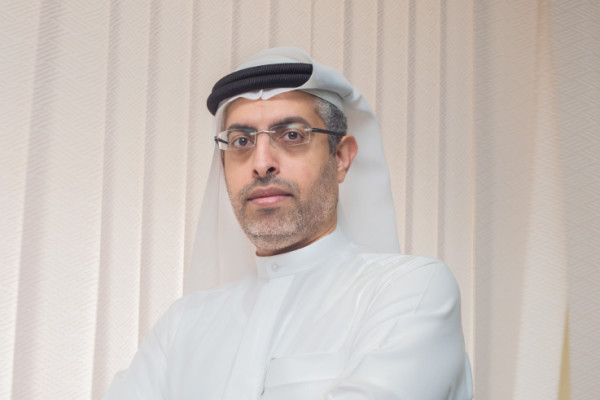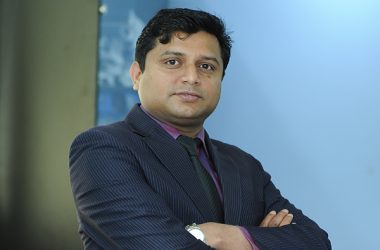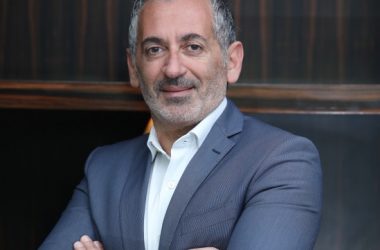The road to Ajman Vision 2021 has already begun, the initiative demanding a happier, greener emirate driven by a ‘distinguished government’. A key partner of the project is city planner Ajman Municipality, whose increasingly mobile employees needed a sharper Wi-Fi solution to catalyse the mandate’s ambitious objectives.
As one of the largest entities in the emirate’s Government, Ajman Municipality’s responsibilities range from environmental projects, granting building permits and construction and infrastructure services. The group’s work has a direct impact on much of Ajman’s administration and development. “We influence a large number of aspects of the city,” Yousuf Mohammed Al Shaiba, Director of Smart Services Department, Ajman Municipality and Planning Department, says. “Our role is crucial – that of a go-between from the citizens to the city itself.”
Defined by the UAE’s leadership in 2010, the nation’s UAE Vision 2021 mandate includes turning the country’s economy into one that is knowledge-based, whilst also prioritising the enhancement of education and healthcare services, and boosting environmental sustainability. Closer to home, currently underpinning a large number of infrastructure enhancements is the goal of satisfying the localised targets of the Ajman Vision 2021. The Government of Ajman aspires to build “A happy society contributing in building a green economy backed by a distinguished government in harmony with the spirit of the Union.”
Announced earlier this year by Sheikh Ammar Bin Humaid Al Nuaimi, Crown Prince of Ajman and Chairman of the Executive Council, the proposed changes focus on developing initiatives that can improve the lives of the emirates’ citizens.
Al Shaiba is clear on his department’s responsibility in driving the change. “Ajman Municipality is one of the largest organisations within our government,” Al Shaiba says. “As such, our work is key in delivering the Ajman 2021 Vision. In order to do this, our employees need high quality network access – on-the-move – for them to deliver their best work.” With this in mind, in what would be the first phase of a future roadmap, Al Shaiba wanted to enable wireless Internet across Ajman Municipality’s main office and six remote organisation
As one of the largest entities in the emirate’s Government, Ajman Municipality’s responsibilities range from environmental projects, granting building permits and construction and infrastructure services. The group’s work has a direct impact on much of Ajman’s administration and development. “We influence a large number of aspects of the city,” Yousuf Mohammed Al Shaiba, Director of Smart Services Department, Ajman Municipality and Planning Department, says. “Our role is crucial – that of a go-between from the citizens to the city itself.”
Defined by the UAE’s leadership in 2010, the nation’s UAE Vision 2021 mandate includes turning the country’s economy into one that is knowledge-based, whilst also prioritising the enhancement of education and healthcare services, and boosting environmental sustainability. Closer to home, currently underpinning a large number of infrastructure enhancements is the goal of satisfying the localised targets of the Ajman Vision 2021. The Government of Ajman aspires to build “A happy society contributing in building a green economy backed by a distinguished government in harmony with the spirit of the Union.”
Announced earlier this year by Sheikh Ammar Bin Humaid Al Nuaimi, Crown Prince of Ajman and Chairman of the Executive Council, the proposed changes focus on developing initiatives that can improve the lives of the emirates’ citizens.
Al Shaiba is clear on his department’s responsibility in driving the change. “Ajman Municipality is one of the largest organisations within our government,” Al Shaiba says. “As such, our work is key in delivering the Ajman 2021 Vision. In order to do this, our employees need high quality network access – on-the-move – for them to deliver their best work.” With this in mind, in what would be the first phase of a future roadmap, Al Shaiba wanted to enable wireless Internet across Ajman Municipality’s main office and six remote organisational sites for 700 internal users.
The overarching aim of the project would be the provision of automated services that could enhance productivity. IT infrastructure would inevitably play a key role in this enablement. “We looked at the various challenges we faced as an organisation and realised we had to initiate changes,” Al Shaiba says. “Employees always had to return to their desks for network access, which is the complete antithesis of the concept of mobility. People need to work independently, and a mobile-enabled infrastructure is an important pillar in this aim.”
The outdated, wired IT infrastructure in the Government buildings had proved a nuisance for the Municipality’s IT team. Legacy technology meant that if a new implementation was approved, laborious physical changes had to be carried out on the building itself. “We underwent processes that seem completely needless,” Al Shaiba says. “Breaking down walls, relaying cables; the installation process was primitive. We always needed to enlist cabling structure companies to carry out the work. Where installation should have taken half a day, it was taking weeks.” With employees having to work across offices, which often entailed moving workstations in the midst of departmental rotations, seamless connectivity was a must; this hassle had to stop.
Having undergone a rigorous screening process for potential technology partners who could carry out the changes, Al Shaiba and his team eventually opted for a Huawei Wi-Fi solution. Beginning in November 2014 and completed by January, the implementation itself was a smooth success. Al Shaiba says the project faced “normal issues” but no major stumbling blocks. “Site preparation was something we had to consider, and required a fair degree of work,” he says. “We needed the actual physical infrastructure that is necessary for wireless itself. Ajman Municipality’s employees need to be able to work seamlessly on tablets, mobiles and notebooks and that in itself needs the right infrastructure.” Al Shaiba also recalls security and capacity issues, but both were easily resolved. “Security always adds another hit, so we had to add encryption to the network segment, while Huawei assisted us by upgrading our servers,” he says.
The benefits of the changes can easily be summed up, according to Al Shaiba. “Three words: easy, secure access,” he says. A centralised Wi-Fi management system now means that Al Shaiba and the Municipality’s IT team are not tasked with ‘looking after’ single access points. In line with the goals of the 2021 Vision, the Municipality now has an infrastructure that can support sustainable development and network growth, meaning a greener approach to IT.
Al Shaiba is delighted with the organisation’s progress in moving from a wired to wireless environment, and lauds its impact. “Not only has it had a positive impact in enabling employees to do things on-the-go between our buildings, but it’s proved to be a massive value-add as a time saver,” he says. He highlights that the implementation is part of a long-term roadmap that will drive the Municipality’s productivity and offer its workers increased flexibility. “We are aiming to have inside-out mobility two years from now,” he says. “That means that all our infrastructure and systems will be designed to support mobile.”
Al Shaiba credits Huawei’s support and expertise as key in delivering the changes. “They have the vision of how to help the customer reach out through the product in a unique way,” he says. “This includes integration with third party products. Their implementation has been cost-effective and high value. They can provide the bandwidth that we need, and can always add more access points.”
Looking forward, Al Shaiba believes the changes have provided Ajman Municipality with the foundations for scalability, and further IT infrastructure enhancement initiatives. “What we have done so far is just phase one,” he says. “This is purely for internal users in the buildings themselves. In future we will hope to provide farther reaching and even better network access for people in this city.”
al sites for 700 internal users.
The overarching aim of the project would be the provision of automated services that could enhance productivity. IT infrastructure would inevitably play a key role in this enablement. “We looked at the various challenges we faced as an organisation and realised we had to initiate changes,” Al Shaiba says. “Employees always had to return to their desks for network access, which is the complete antithesis of the concept of mobility. People need to work independently, and a mobile-enabled infrastructure is an important pillar in this aim.”
The outdated, wired IT infrastructure in the Government buildings had proved a nuisance for the Municipality’s IT team. Legacy technology meant that if a new implementation was approved, laborious physical changes had to be carried out on the building itself. “We underwent processes that seem completely needless,” Al Shaiba says. “Breaking down walls, relaying cables; the installation process was primitive. We always needed to enlist cabling structure companies to carry out the work. Where installation should have taken half a day, it was taking weeks.”
With employees having to work across offices, which often entailed moving workstations in the midst of departmental rotations, seamless connectivity was a must; this hassle had to stop.
Having undergone a rigorous screening process for potential technology partners who could carry out the changes, Al Shaiba and his team eventually opted for a Huawei Wi-Fi solution. Beginning in November 2014 and completed by January, the implementation itself was a smooth success. Al Shaiba says the project faced “normal issues” but no major stumbling blocks. “Site preparation was something we had to consider, and required a fair degree of work,” he says. “We needed the actual physical infrastructure that is necessary for wireless itself. Ajman Municipality’s employees need to be able to work seamlessly on tablets, mobiles and notebooks and that in itself needs the right infrastructure.” Al Shaiba also recalls security and capacity issues, but both were easily resolved. “Security always adds another hit, so we had to add encryption to the network segment, while Huawei assisted us by upgrading our servers,” he says.
The benefits of the changes can easily be summed up, according to Al Shaiba. “Three words: easy, secure access,” he says. A centralised Wi-Fi management system now means that Al Shaiba and the Municipality’s IT team are not tasked with ‘looking after’ single access points. In line with the goals of the 2021 Vision, the Municipality now has an infrastructure that can support sustainable development and network growth, meaning a greener approach to IT.
Al Shaiba is delighted with the organisation’s progress in moving from a wired to wireless environment, and lauds its impact. “Not only has it had a positive impact in enabling employees to do things on-the-go between our buildings, but it’s proved to be a massive value-add as a time saver,” he says. He highlights that the implementation is part of a long-term roadmap that will drive the Municipality’s productivity and offer its workers increased flexibility. “We are aiming to have inside-out mobility two years from now,” he says. “That means that all our infrastructure and systems will be designed to support mobile.”
Al Shaiba credits Huawei’s support and expertise as key in delivering the changes. “They have the vision of how to help the customer reach out through the product in a unique way,” he says. “This includes integration with third party products. Their implementation has been cost-effective and high value. They can provide the bandwidth that we need, and can always add more access points.”
Looking forward, Al Shaiba believes the changes have provided Ajman Municipality with the foundations for scalability, and further IT infrastructure enhancement initiatives. “What we have done so far is just phase one,” he says. “This is purely for internal users in the buildings themselves. In future we will hope to provide farther reaching and even better network access for people in this city.”





